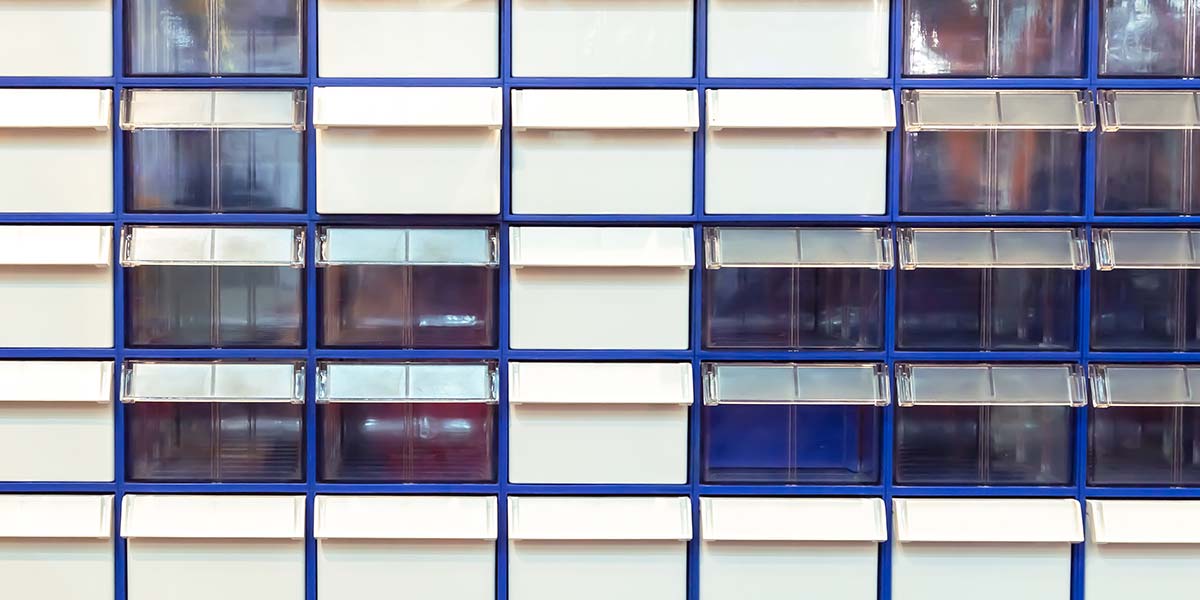If you want to get anything done in electronics, you need the proper tools, lighting, ventilation, references, and — most importantly — a ready supply of parts. If you have to order a significant number of parts for a project, there’s a good chance that you’ll lose momentum and interest before you even begin.
I have yet to find a vendor that can supply every part for every project. Multiple vendors translate into extra shipping costs and delays. The traditional answer to this dilemma is, of course, the junkbox.
My first junkbox was a wooden affair, tough enough to hold multiple carcasses of heavy commercial radios in various stages of disrepair. The iron-core, high voltage transformers alone weighed 20 lbs or more. Sometimes, I’d leave the tubes in place and other times I’d pull them, test them, and then put them in a shoebox.
When a project called for parts, I’d pour through the radios — diagonal cutters and soldering iron at the ready — plucking resistors, capacitors, tube sockets, and other devices on my wanted list.
With time, my junkbox evolved to a metal file cabinet, with each drawer holding the remains of relatively small, light solid-state devices. I added anti-static bags to hold PC cards and other static-sensitive components and modules.
Today, my junkbox is a curated system of containers of various types and sizes, as a function of the nature of the components and how often they’re likely to be needed. A good portion of my junkbox is devoted to new stock leftover from projects, often intentionally overpurchased in order to grow my library of components and devices.
For example, I no longer hunt after resistors, but have a plastic drawer devoted to leaded and unleaded versions. Plus, they’re arranged by wattage and resistance rating.
The following is an overview of my distributed junkbox, including the actual box structure. I hope that it can give you some ideas as you grow your own electronics infrastructure. Prices are Amazon, unless otherwise noted.
1. Paperboard Boxes. I have a few small boxes containing parts I’m not likely to need any time soon, but that I don’t want to toss yet. Contents include special effects pedals for guitars, mixer boards, and outdated PC boards.
2. Plastic Moving Containers, such as the Akro-Mils 12 Gallon, 21x15x12, Plastic Storage Box ($23). I have one of these large boxes devoted to vacuum tubes that have been tested. Another I devoted to photographic supplies that I rarely use, including a variety of light meters, flash cables, and mechanical supports that I hope to repurpose for a future robotics project.
3. Sterlite Clear Plastic Storage Container (Medium, $14). I have several of these, each dedicated to a specific project for Nuts & Volts. Whenever I find a component or part that might be useful in the project, I simply toss it in the box, along with a note to remind myself why the part is relevant. For example, one of these containers holds laser LEDs, prisms from a microscope teardown, and related parts for a device that will determine the bevel on the edge of a blade.
4. The Homz Plastic Storage, Modular, Stackable Storage Bin (7.5 quart; $30 for 5) is probably the best junkbox container system ever developed. Each shoebox-sized container is semi-transparent, so contents are easily identified without removing the box from a bookshelf. I have boxes dedicated to high voltage electrolytic capacitors, high voltage plastic capacitors, high wattage resistors, high voltage wire, and household switches and connectors. I use 4x6 inch Ziploc bags to hold and arrange components by value within each box.
5. Dewalt Tool Organizer, TSTAK III Single ($29) and Double ($33) Drawer. As you’ll soon discover, your work space can be overrun with Homz storage. At some point, you may be encouraged by a family member or loved one to up you style from plastic boxes to plastic drawers that can be stacked and easily transported — especially if you add the wheeled base.
6. Gerstner Wooden Tool Chest (https://gerstnerusa.com/), Domestic $1345 for the 2007 Classic Chest with seven felt-lined drawers and a top storage space. International GI-T24 11-Drawer Top Chest $371, Amazon. When I bought my first real Gerstner on eBay, the world began to change. Every part has a drawer, and every drawer is part of a larger organized whole. I have one chest dedicated to watch repair; one to microscopic photography; and one to Arduino/Raspberry Pi processors and related sensors. As a result, switching to a new project on the workbench is simply a matter of switching tool chests. The only downside to the Gerstner solution is the cost. The International line (made overseas) is composite and veneer and affordable. The domestic line (made of solid hardwoods) is beautiful and functional.
Again, this is my opinion on the evolution of the junkbox based on my experience. You’ll likely have a very different take on what works. If so, please consider sharing with your fellow N&V readers. NV

